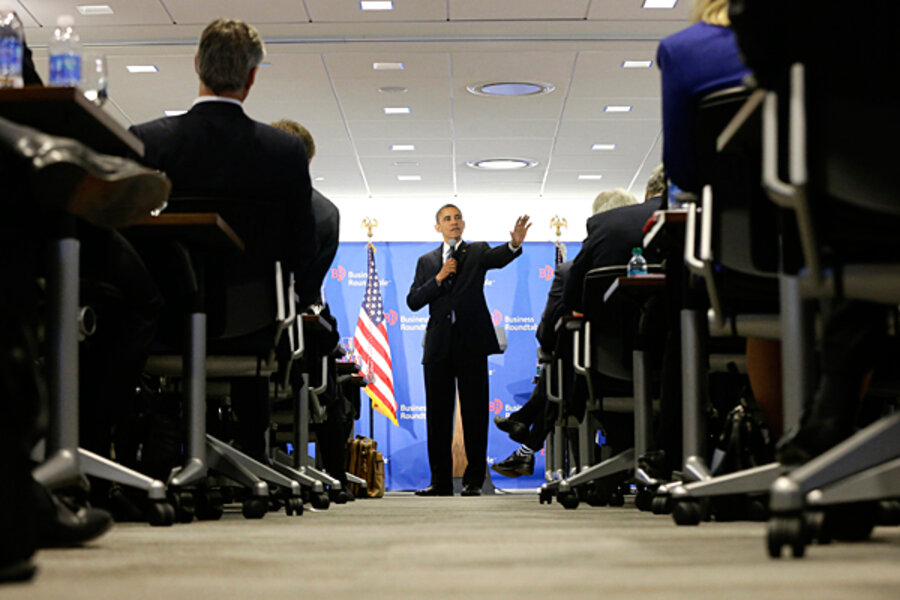Still playing offense, White House seeks to rewrite debt ceiling rules
Loading...
| Washington
The Obama administration believes the White House should have the ability to raise the nation's debt ceiling unless Congress leaps a very high bar to block it.
Currently, Congress must approve any increase in the amount of debt the United States government can take on – meaning a simple majority in the House and (usually) 60 votes in the Senate. Under a proposal floated Wednesday by the Obama administration, the bar for congressional intervention would be much higher: Lawmakers would need a veto-proof majority to block a debt-limit increase.
Such a change “would lift the periodic threat of default from the U.S. economy and remove politics from future debt limit debates, while preserving Congress’ essential role in spending, revenue and borrowing decisions,” Jenni LeCompte, a Treasury spokeswoman, wrote in a blog post Wednesday.
If Congress were to approve the president's changes to the debt-ceiling process, future increases would occur in a way similar to how Congress resolved the debt increase in the summer of 2011. Under a plan originally proposed by Senate minority leader Mitch McConnell, President Obama asked for a debt-limit increase, and Congress could vote to disapprove of it. But if Congress could not come up with a veto-proof majority to halt an increase in the debt ceiling, the national debt limit would rise.
In the future, the Treasury said, the process to raise the debt limit would work as follows:
The president asks Congress for a debt-ceiling bump, and both chambers have 15 days to pass a resolution expressing their disapproval. If they do, the president can then decide whether to block his own debt-ceiling hike by signing the legislation or, more likely, vetoing the bill. If the bill is vetoed, a two-thirds majority of both chambers of Congress is needed to override him.
Treasury dubs the entire matter the “McConnell Provision,” but the Senate minority leader himself dismisses it. The original idea, he says, came at a particular moment – specifically, one at which Republicans won concessions from Democrats in the form of a boatload of spending cuts.
“The debt ceiling was raised last year only after the White House agreed to at least $2 trillion in cuts to Washington spending, and agreed to be bound by the timing and amount set by Congress – not [the president’s] own whim,” says Don Stewart, a spokesman for Senator McConnell. “The president wants to have the ability to raise the debt ceiling whenever he wants, for as much as he wants, with no responsibility or spending cuts attached. This is an idea opposed by Democrats and Republicans alike; it's a power grab that has no support here.”
No one disputes that McConnell’s office designed the debt-ceiling mechanism used in the summer of 2011.
"I decided to make [the president] own" the debt ceiling, McConnell told journalist Bob Woodward, according to Mr. Woodward’s book "Price of Politics." "We thought he ought to own it. It's part of my job to protect my members, if I can, against having to vote for it."
Congress's role is of direct concern because America will hit its new debt ceiling some time in the first quarter of 2013.
Republicans see the debt ceiling as a leverage point from which to extract spending cuts from Democrats.
Democrats and a growing group of business leaders view politicizing the debt ceiling as unnecessarily threatening the nation’s credit rating and deflating business confidence.
“I want to send a very clear message to people here,” Mr. Obama told a group of business leaders Wednesday. “We are not going to play that game next year. If Congress in any way suggests that they're going to tie negotiations to debt-ceiling votes and take us to the brink of default once again as part of a budget negotiation, which, by the way, we have never done in our history until we did it last year, I will not play that game because we've got to, we've got to break that habit before it starts.”







